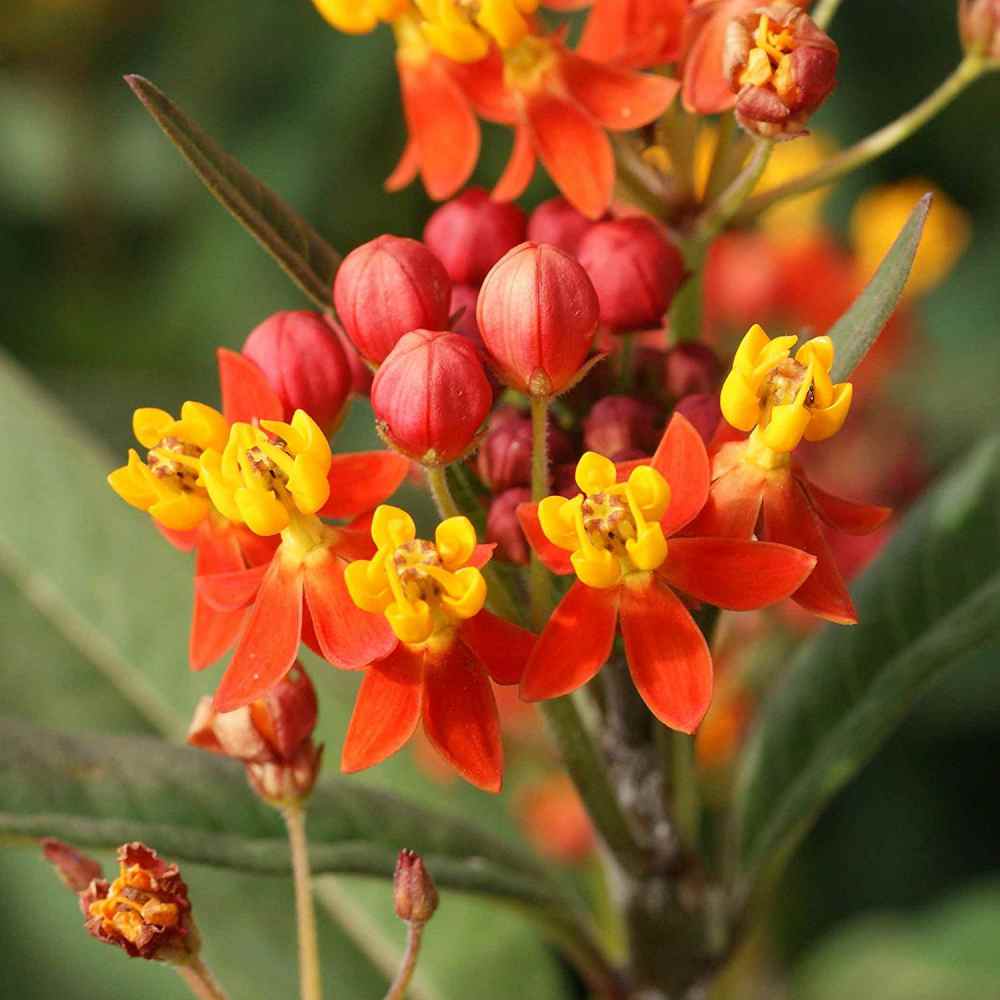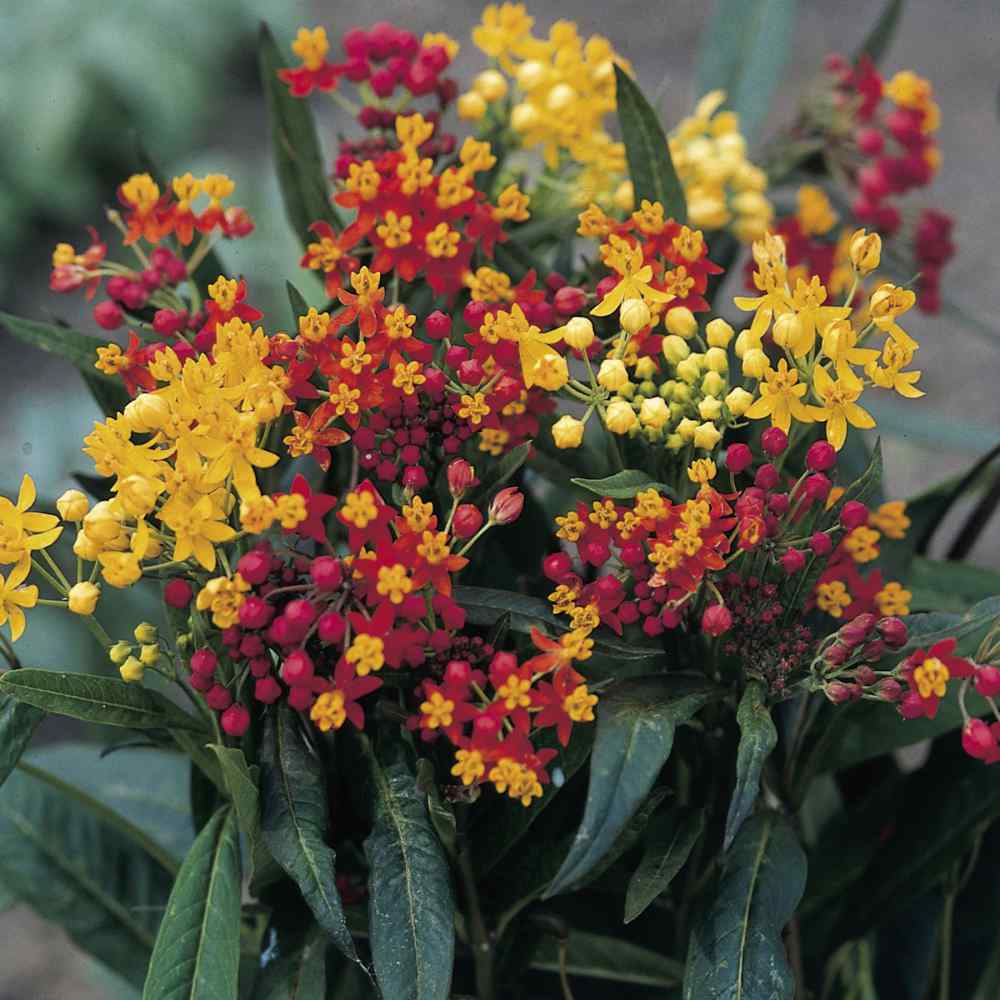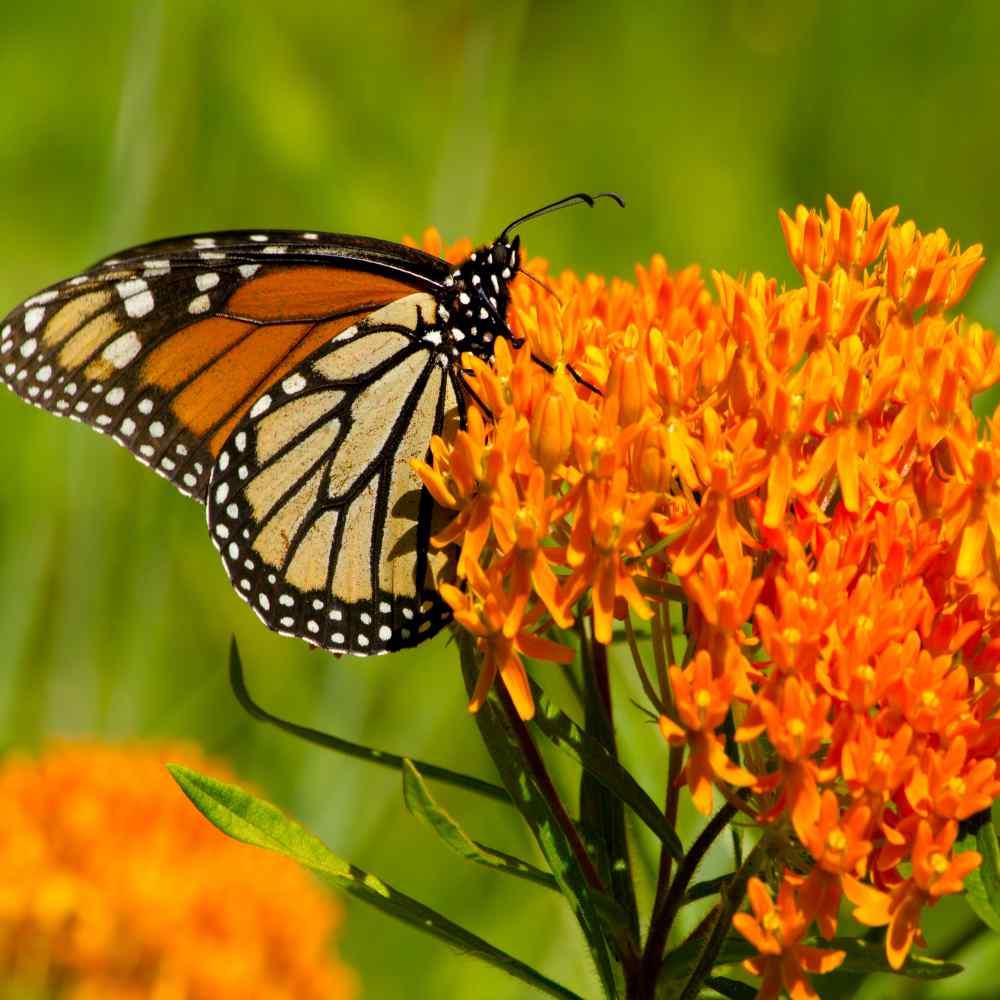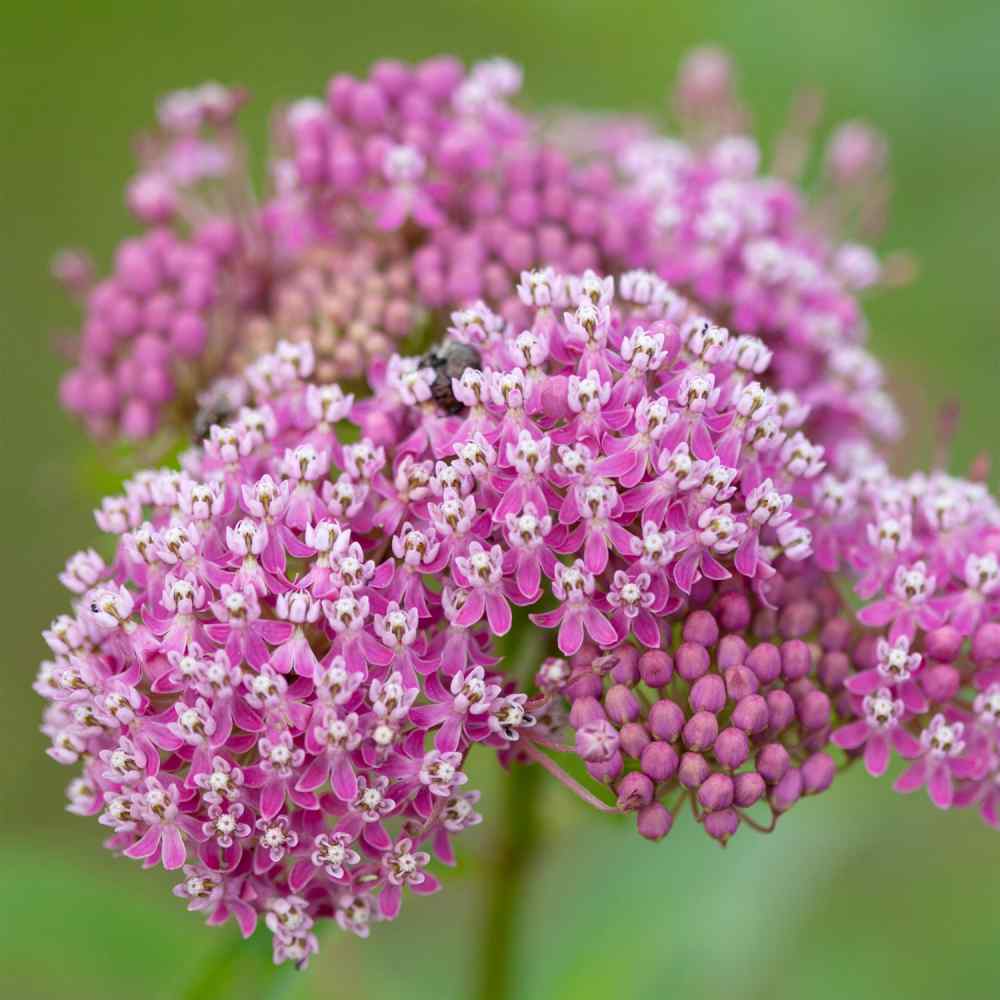
Tropical Milkweed Planting Guide
Quick Facts About Tropical Milkweed
Tropical Milkweed seeds produce tender evergreen perennials. Butterflies love this plant, and it provides a great food source for them! Commonly called Mexican Butterfly Weed, Blood Flower or Tropical Milkweed, these showy plants have blooms in the colors or red, orange and yellow.
Planting Time
Start seeds indoors start 8 weeks before the last spring frost date. In milder areas, sow directly outdoors after all danger of frost.

Planting Location
Plant in full sun with well drained soil.
How to Plant Tropical Milkweed
- Sow seeds indoors 8 weeks before the last spring frost. In mild climates can start directly outdoors after danger of frost.
- Soak seeds 24 hours in warm water before planting.
- Sow 2 - 4 seeds per cell and press lightly into soil, do not cover.
- Keep warm (70-75F) and moist until germination.
- Once seedlings sprout, ensure they receive plenty of light by placing them on a sunny windowsill or positioning them 3-4 inches below fluorescent plant lights that are switched on for 16 hours daily and off for 8 hours at night. Adjust the lights as the plants grow taller. Avoid using incandescent bulbs as they generate excessive heat. Remember, most plants need a period of darkness to thrive, so do not keep the lights on for 24 hours.
- Thin to one seedling per cell when they have two sets of leaves.
- Seedlings require minimal fertilizer; feed them with a starter solution (half the strength of a full indoor houseplant food) when they reach 3-4 weeks old, following the manufacturer's instructions.
- Transplant outdoors after all danger of frost has passed.
- Before planting seedling plants in the garden, it's essential to "harden them off." To acclimate young plants to outdoor conditions, place them in a sheltered outdoor area for a week. Ensure they are shielded from strong winds and direct sunlight initially. If there is a risk of frost at night, either cover the plants or bring them indoors, then return them outside in the morning. This process of hardening off strengthens the plant's cell structure, minimizing transplant shock and sunburn.
- Once seedlings are ready to transplant to your garden, select a location in full sun with well drained soil.
- Prepare planting area by turning soil 6 - 8 inches, removing debris and lightly raking to level the planting area.
- Plant seedlings 24 inches apart.
Direct Sowing Outdoors
- Sow seeds directly in average soil under full sun after the last frost has passed. Asclepias thrives in well-drained soil.
- Clear the soil of weeds and incorporate organic matter into the top 6-8 inches; afterwards, level and smoothen the surface.
- Many plants thrive when the soil is enriched with organic matter. Compost, a nutrient-rich organic material with a balanced nutrient composition and optimal pH level, is a great option that can be incorporated into your planting area whenever needed. If compost isn't accessible, you can enhance the soil post-planting by adding 1-2 inches of organic mulch, which will gradually decompose into compost. Following the growing season, a soil test can reveal the necessary soil amendments for the next season.
- Sow 2 - 4 seeds every 24 inches, press seeds lightly into soil. Do Not Cover.
- Keep moist until germination.

Care And Maintenance
- Keep weeds in check throughout the growing season by cultivating regularly or using mulch. Weeds can deprive plants of water, space, and nutrients, so it's essential to manage them effectively to prevent their seeds from sprouting.
- Mulches play a crucial role in preserving soil moisture and stabilizing soil temperatures.
- Once planted outdoors leave undisturbed as Tropical Milkweed developes a tap root.
- Plants require approximately 1 inch of rain weekly throughout the growing season. Utilize a rain gauge to monitor if additional watering is necessary. Opt for a drip or trickle system that dispenses water at low pressure near the soil surface. If using overhead sprinklers, water in the early morning to allow foliage to dry before nightfall, reducing the risk of diseases. Maintain moist soil without over-saturating it.
- Remove spent blooms to keep plants flowering until fall.
- If plants are killed by frost remove them in the fall to avoid disease issues the following year.




































